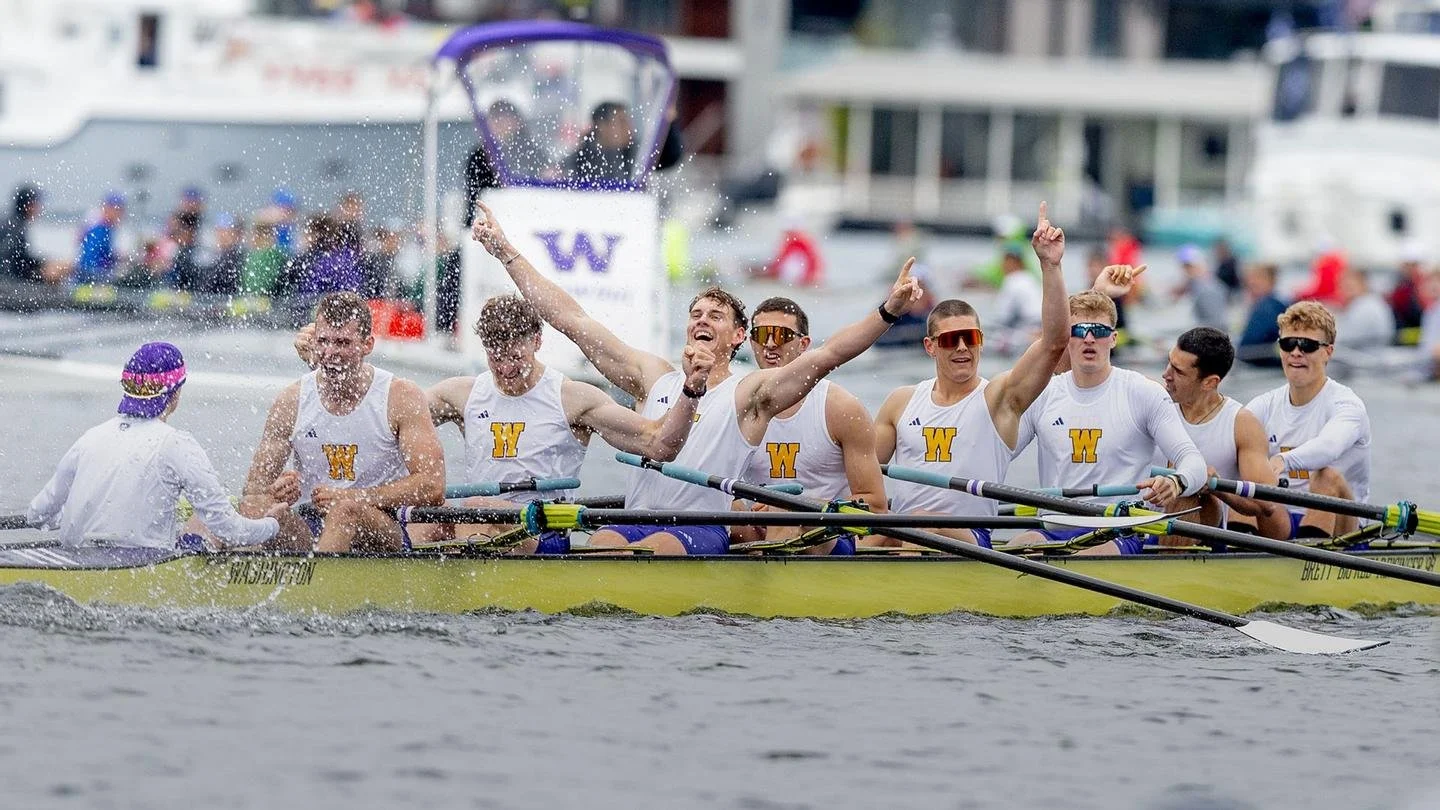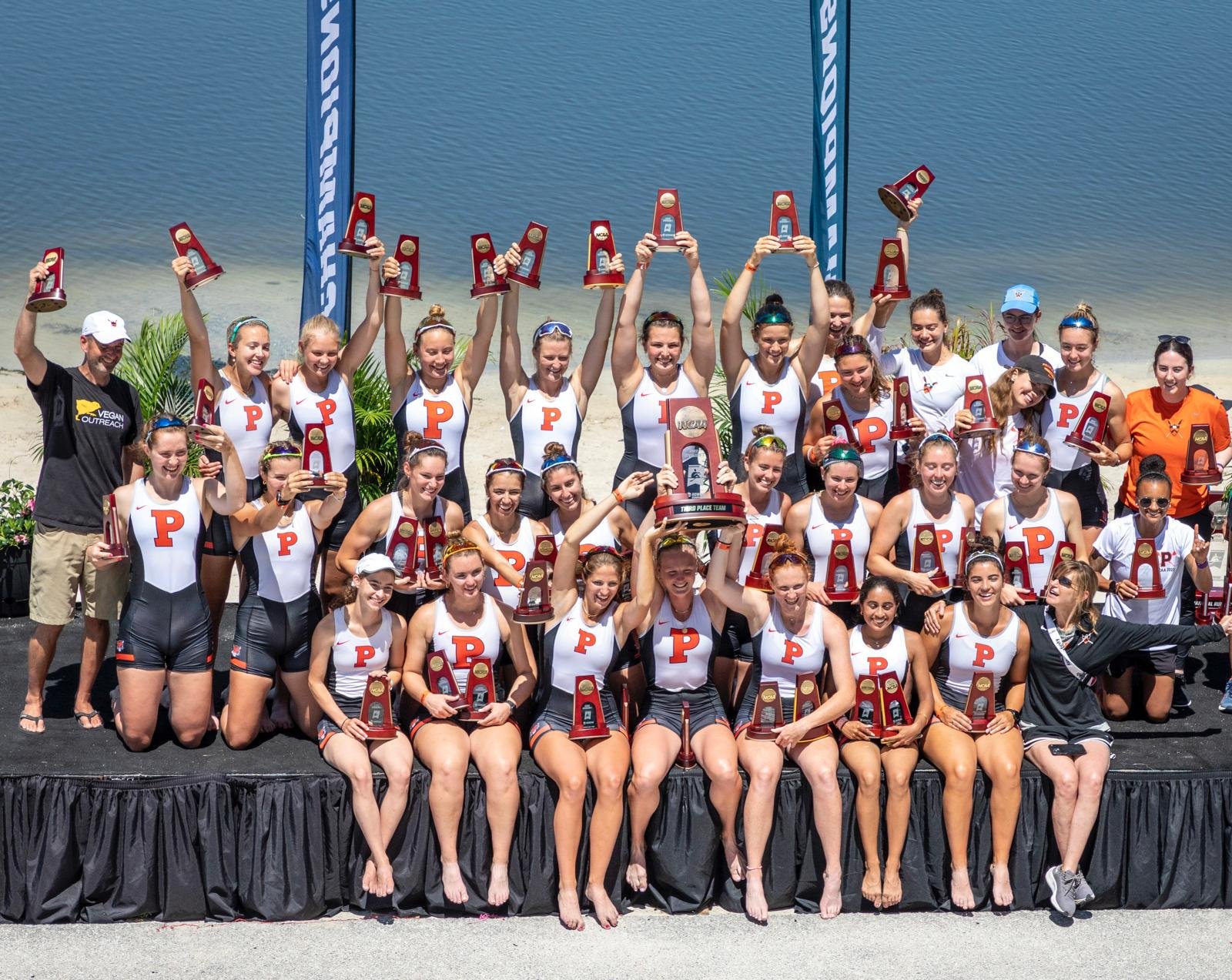U.S. Colleges Make Waves in Paris 2024
The Olympic Games have long been a showcase of the world's top athletic talent, and rowing is no exception. In recent years, the influence of U.S. collegiate rowing programs has become increasingly evident on the Olympic stage. Lets look at the numbers behind U.S. college representation in Olympic rowing and examine their impact on medal success. These numbers guide us to the colleges that best develop athletes and prepare them for the international stage. It also gives a guide as to why so many young athletes see studying in the U.S. as a place to develop athletically preparing them for the world stage.
A Strong Showing from U.S. Colleges
At the recent Olympic Games, a total of 501 athletes competed in rowing events. Of these, 111 athletes had studied at colleges in the United States, representing a significant 22.16% of all Olympic rowers. This impressive statistic underscores the strength and quality of U.S. collegiate rowing programs in preparing athletes for international competition.
Medal Success: Punching Above Their Weight
When it comes to medal performance, U.S. college-educated rowers truly shined. Out of the 111 total athletes who won medals in rowing events, 42 had attended U.S. colleges. This means that 29.17% of all rowing medalists were products of the U.S. collegiate system. Notably, U.S. college rowers won medals at a higher rate than their overall representation would suggest, demonstrating the effectiveness of these programs in developing world-class talent.
Top Performing Colleges
Several U.S. institutions stood out for their representation at the Olympics:
University of Washington: 16 athletes (11 medalists)
Yale University: 16 athletes (8 medalists)
University of California, Berkeley: 14 athletes (6 medalists)
Princeton University: 10 athletes (3 medalists)
Harvard University: 6 athletes (4 medalists)
Full results are below:
Medal Rate: This shows the percentage of a college's athletes who won medals. Drexel, Virginia, Brown, and Marist have 100% medal rates, but each only sent one athlete. Among colleges with larger representations:
University of Washington: 68.75%
Harvard University: 66.67%
Yale University: 50.00%
Largest Delegations without Medals:
University of Southern California: 6 athletes
University of Wisconsin: 5 athletes
Diversity of Representation: 26 different U.S. colleges had at least one athlete competing in Olympic rowing events.
Ivy League Impact: Ivy League schools (Yale, Princeton, Harvard, Penn, Dartmouth, Cornell, Brown) accounted for 39 of the 111 U.S. college-educated rowers (35.14%).
West Coast Dominance: West Coast schools (Washington, Cal Berkeley, Stanford, USC) sent 41 athletes, representing 36.94% of U.S. college-educated rowers.
This detailed analysis highlights the significant impact of U.S. collegiate rowing programs on Olympic performance. It also shows the diversity of institutions contributing to the Olympic rowing talent pool, from large public universities to Ivy League schools and smaller private colleges.
A Look at Representation and Medal Success
The data shows that U.S. colleges are punching above their weight in Olympic rowing and are a hub for developing Olympic athletes. While representing just over 22% of the total athletes, they account for nearly 30% of the medalists. This success can be attributed to several factors:
Well-funded college programs with top-notch facilities
High-level coaching and training methodologies preparing athletes for the step up to a national team environment.
Competitive collegiate environments that foster excellence, which enabled athletes to learn from other top performing athletes.
Strong recruitment pipelines for talented young rowers
Here's a table showing the medal breakdown for each college:
Key Insights:
Gold Medal Leaders: Yale leads with 3 gold medals, followed by Princeton with 2. Five other schools (Washington, Harvard, Drexel, Cornell) each secured 1 gold medal.
Most Diverse Medal Haul: Yale and Washington stand out for winning medals across all three colors.
Silver Specialists: Cal Berkeley excelled in silver medals, winning 4, the most of any U.S. college.
Bronze Powerhouse: Washington dominated the bronze medal count with 8, significantly more than any other institution.
Single Medal Performers: Seven schools (Drexel, Cornell, Michigan, Central Florida, Virginia, Iowa, Syracuse, Brown, Marist, Stanford) each contributed one medal to the total count.
Ivy League schools (Yale, Princeton, Harvard, Cornell, Brown) accounted for 17 of the 42 medals (40.48%), including 7 of the 9 gold medals (77.78%).
West Coast schools (Washington, Cal Berkeley, Stanford) won 18 medals (42.86% of the total), showing strong regional performance.
Public vs. Private: While private institutions like Yale and Princeton led in gold medals, public universities like Washington and Cal Berkeley had strong overall medal counts.
Global Reach of U.S. College Rowing
International vs. U.S. Athlete Breakdown:
Out of the 111 total athletes, 42 (37.84%) are from the United States, while 69 (62.14%) are from other countries. The GB team have the second highest representation of Olympians, with 14 out of their 42 (33.33%) athletes in Paris studying at a college in the U.S. Furthermore, every U.S. rower that competed in Paris studied in college and rowed along side their studies.
Top Countries Represented:
United States - 42 athletes (37.84%)
United Kingdom (GB) - 14 athletes (12.61%)
Australia - 7 athletes (6.31%)
Canada, Denmark, New Zealand - 4 athletes (3.60%)
Switzerland, Italy - 3 athletes (2.70%)
A few things stand out here:
The global reach and appeal of U.S. college rowing programs, attracting athletes from 17 different countries.
The diverse international representation within these collegiate teams, complementing the strong American talent pool.
The ability of U.S. institutions to develop world-class rowers, both from domestic and international regions.
Top Colleges for International Representation:
Key Insights:
UC Berkeley leads the pack with the highest percentage of international athletes at 71.43%, over two-thirds of their total Olympic roster.
Syracuse and USC both have an even split, with half of their athletes coming from international backgrounds.
Yale and Washington are tied for the third-highest percentage at 43.75% each.
Stanford has 40% international representation, slightly edging out Harvard's 33.33%.
Princeton has the lowest percentage of international athletes among this top group, but still maintains a substantial 30% foreign contingent.
This represents the differences in the level of internationalization across the top US college rowing programs. The ability to offer scholarships for rowing allows athletes to make the move to a U.S. college vs staying in their home country. The data suggests that the most elite and successful programs, like UC Berkeley, Yale, and Washington, have been able to attract a diverse array of international talent to complement their American rowers. This international diversity likely contributes to their overall Olympic performance and medal haul.
University of California, Berkeley - 10 international athletes out of 14 total (71.43% international)
Washington University - 7 international athletes out of 16 total (43.75% international)
Yale University - 7 international athletes out of 16 total (43.75% international)
The Attraction of U.S. Collegiate Experience
The impressive showing of U.S. college-educated rowers at the Olympics highlights the strength of collegiate rowing programs in the United States. As these institutions continue to invest in their athletes and facilities, we can expect to see their influence grow on the international stage. For aspiring rowers, these statistics make a compelling case for the value of pursuing higher education in the U.S. while honing their athletic skills.
Some countries have made it difficult for their athletes to study in the U.S. - opting to develop athletes domestically. Allowing athletes to develop in a fun, competitive environment with the top young talent in the world allows athletes to develop and foster a love for the sport - ultimately allowing athletes to pursue an Olympic path. See our article on how studying the U.S. helped Sholto develop for the GB team:
‘How rowing at Yale prepared me for the GB rowing team’
The success of U.S. college rowers at the Olympics not only brings pride to their alma maters but also reinforces the United States' position as a powerhouse in the sport of rowing. As we look to future Olympic Games, all eyes will be on these collegiate programs to see if they can maintain and even improve upon their impressive performance.














Our comprehensive guide to U.S. college rowing. We highlight how to follow the racing, some key information about rowing in the U.S. and the college’s that offer scholarships.